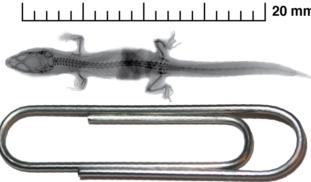Please wait...
About This Project
Adaptive radiations occur when an evolutionary lineage diversifies and adapts to use a previously unoccupied niche or underutilized resource, such as Darwin’s Finches. We seek to test hypotheses about the patterns and processes that generate an adaptive radiation by quantifying the morphological diversity of a secretive species-rich group, the New World leaf-litter geckos. We will compare the morphology of island and mainland gecko species using x-rays and photos of preserved specimens.
More Lab Notes From This Project

Browse Other Projects on Experiment
Related Projects
How do polar bears stay healthy on the world's worst diet?
Polar bears survive almost entirely on seal fat. Yet unlike humans who eat high-fat diets, polar bears never...
Uncovering hidden insect diversity associated with a likely undescribed gall-forming midge
Does a likely undescribed species of gall-forming midge (pers. comm. Ray Gagné) on Eriodictyon plants (Yerba...
Macrofungi of the California archipelago
The eight islands of the California Archipelago are a well-studied biodiversity hotspot — but we know almost...




